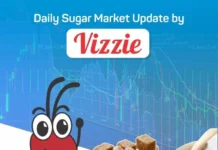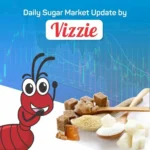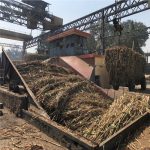THE MISSING PIECE
New York’s closing this week was more of the same, that is, the market goes up and down to the rhythm of the algorithms and in the absence of fundamentals that substantiate a price increase. Therefore, NY closed out Friday’s trading floor at 27.33 cents per pound for the contract expiring in March/2024, accumulating a fall of 44 points over the week, equivalent to almost 10 dollars per ton. The other contracts corresponding to the Center-South 2024/2025 crop fluctuated between 32 and 46 points down (approximately from 7 to 10 dollars per ton).
The market continues in search of 30 cents per pound. It reached 28.18 over the week. However, it is essential to recognize that the information driving these highs is already incorporated into the market and, in theory, should be reflected on the current prices. continues in search of 30 cents per pound. Thus, in order for prices to continue their upward trajectory towards the iconic level of 30 cents per pound, a surprising and impactful event would be necessary. The question is: what would these possible events be?
Note that the market has already priced in the expectation that India will not export sugar this year. Additionally, it anticipated the potential reduction in Thailand’s sugar production, a direct consequence of the effects of a severe drought. The Thai government indicates that sugar price regulation in the country is an effective tool in combating inflation, implying an expectation of reduced exports. The discussed global sugar deficit, widely debated in the sector, as well as the lineup at Brazilian ports (see more below) are also contemplated in the current market prices.
What could still bring a more concerning scenario (for the shorts) for the sugar prices is a possible escalation of the crisis in the Middle East with impacts on oil prices and the size of the necessary coverage on the part of the industrial sugar consumers. Industries, hoping for more favorable prices, have delayed their purchases of raw material, a strategy that might have turned out ineffective in face of prices that have not gone down as expected. Now, any significant sales on the part of the speculative funds, which are currently at a long position, ends up being mitigated by the demand of these consumers that are behind on their acquisitions.
But there is an absolutely important point for the achievement of this plan (the 30 cents): the active presence of the speculative funds. Without them, the job will be much more challenging and new factors will have to come along with enough strength to push the market with the same efficacy. That’s the missing piece.
As it is known, the energy market is anemic. In a month, Brent oil fell 6.35%, type WTI retreated 9.37% and natural gas plummeted 18.91%. At the same time, UNICA released the recent figures of the Center-South sugarcane crushing: up until November 1, 560.5 million tons of sugarcane have been processed, a volume only surpassed by the 2020/2021 crop. Analyzing historical data of the last twelve years, the crushed volume up until this date corresponds to 89.4% of the crop total on average. Based on these data, it’s estimated that the total crushing for the current crop will reach about 627 million tons of sugarcane.
The market response to any sign of sugar export by India, to a Thai crop that goes beyond the expectations or to a Center-South production that reaches 41.6 million tons of sugar can be volatile. If any of these events materialize, the fundamentals currently supporting the long positions of the speculative funds could be second-guessed, possibly calling for a reassessment of their investment strategies. Or, in layman’s terms, “look out below because here comes selling.”
The history of the market reminds us that, often, after great highs, there are significant falls. The example of January 2011 is emblematic, where an average price in New York of 32.09 cents per pound was followed by a 32% decline in May. This pattern was repeated in the months of May after peaks in January of subsequent years, with falls of 16%, 24%, and 15% in 2015, 2017, and 2018, respectively. More recently, in 2020, a peak in February was followed by a 29% drop in May. Ah, but today is different…
However, each year brings with it a distinct set of circumstances. The current year, with its unique challenges and configurations, may not entirely align with previous patterns, suggesting that while we can look to the past for insights, the peculiarities of the present always have the potential to surprise the market.
On the other hand, the analysis of sugar seasonality based on the last 25 years and on the data of this current crop estimates that the average price of the NY contract in February/2024 can come to 28.11 cents per pound. That’s a lot of information, isn’t it?
—
Up until the closing of the data on October 31, 2023, we saw that the mills fixed prices for an amazing volume of more than 11.18 million tons of sugar. The reached average price was 22.06 cents per pound. When we convert this value into real, we see an equivalent to R$2,544 per FOB Santos ton, including the polarization premium.
October witnessed a slowdown on the fixation activities, possibly influenced by the expectation of more appealing prices for the contracts maturing from October/2023 on. Historically, pricing for a new crop concentrates on the first contracts of the cycle (May and July). The reduction of negotiations at the exchange, which showed a drop of 43% in October, with 2.07 million futures contracts traded against 3.6 million in the previous month, is also a relevant factor.
According to Williams, the lineup at the Santos port on Wednesday, the 8th, was at 5,259,000 tons of sugar waiting to be loaded. The average waiting time of the five listed terminals was 33.54 days. Two weeks ago, the average waiting time was 25.19 days. In short, the sugar arriving today will wait an additional period of 8 days on average compared to two weeks ago. That is, things are getting worse.
To read the previous episodes of World Sugar Market – Weekly Comment, click here
To get in touch with Mr. Arnaldo, write on arnaldo@archerconsulting.com.br












